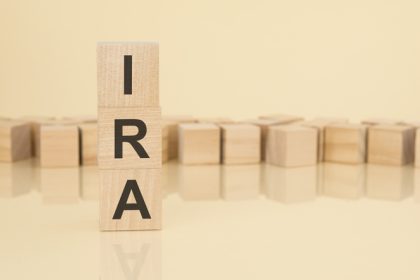Choosing investments for retirement means finding the right balance between safety and growth. You want a mix that can handle market ups and downs while giving you steady income. Since there’s no one right answer, a financial advisor can help you build a plan that fits your goals, risk level and income needs.
5 Investments for Retirees
When planning for retirement, it’s important to prioritize financial stability, predictable income and protection against inflation. The best types of investments for retirees tend to focus on capital preservation and income generation, with less exposure to high-risk assets. That doesn’t mean retirees need to avoid growth altogether — some allocation to equities can help to keep up with inflation and extend the life of an investment portfolio. The key is finding the right balance.
Here are five investments that retirees may consider adding to their portfolios.
1. Bonds
Bonds are a cornerstone of retirement investing due to their relative stability and consistent income. In simple terms, bonds represent loans made to governments or corporations. These loans pay interest, known as a coupon, until they reach maturity and repay the principal. Retirees often favor high-quality, investment-grade bonds, including municipal bonds (which may offer tax advantages) and corporate bonds with strong credit ratings.
2. Certificates of Deposit (CDs)

Certificates of deposit (CDs) are time deposits offered by banks and credit unions that typically pay a fixed interest rate over a specified term, such as six months, one year or five years. The FDIC insures CDs up to $250,000 per depositor, per institution, making them one of the safest ways to earn interest on cash.
For retirees who value security and predictability, CDs can be a useful tool, particularly when used in a CD ladder strategy. This involves staggering multiple CDs with different maturity dates, providing ongoing access to funds and potentially higher yields than a traditional savings account.
3. Dividend-Paying Stocks
While stocks carry more risk than bonds or CDs, dividend-paying stocks can offer a blend of income and growth potential. Companies with dividend payouts often have strong fundamentals and consistent cash flow, making them attractive to retirees seeking ongoing income with the chance for capital appreciation.
Sectors like utilities and healthcare are popular among dividend investors due to their relative stability. Retirees may choose to hold these stocks directly or invest through dividend-focused mutual funds and ETFs, which offer built-in diversification and reduce the risk tied to any single company.
4. Treasury Inflation-Protected Securities (TIPS)
TIPS are U.S. Treasury bonds designed to protect against inflation. The principal value of a TIPS bond adjusts based on changes in the Consumer Price Index (CPI), which aims to preserve your purchasing power even when prices rise. Interest payments are applied to the inflation-adjusted principal, providing increasing income over time in an inflationary environment. TIPS are a strong addition to a retirement portfolio because they offer government backing, inflation protection and tax deferral until maturity.
5. U.S. Treasury Securities
Standard U.S. Treasury securities — including Treasury bills, notes and bonds — are considered some of the safest investments in the world. Issued by the federal government, they are backed by the full faith and credit of the U.S. government and come in varying maturities to meet different time horizons.
For retirees, Treasury securities can offer peace of mind and predictable returns. Treasury bills mature in one year or less and offer short-term flexibility, while notes and bonds provide longer-term income. They can be purchased directly from the U.S. Treasury via TreasuryDirect or through brokerages.
Examples of Retirement Portfolios

A well-designed portfolio blends different assets to create consistent income, limit downside risk and allow for long-term growth. A financial advisor can tailor a retirement portfolio to support your lifestyle today, and your financial security tomorrow.
Below are two sample retirement portfolios to illustrate how different goals and tolerances can shape asset allocation.
Aggressive Retirement Portfolio
Retirees who don’t rely on their investment portfolio for daily expenses, or want to pursue a certain goal, may favor an aggressive strategy. This type of portfolio maintains a higher allocation to equities to support long-term growth.
- 60% in dividend-paying stocks or equity income funds
- 20% in bonds or bond funds
- 10% in Treasury Inflation-Protected Securities (TIPS)
- 5% in certificates of deposit (CDs) or short-term Treasury bills
- 5% in cash or money market funds
This mix aims to keep pace with inflation, provide a rising income stream, and still keep some balance with safer investments, though it carries more risk during market downturns.
Conservative Retirement Portfolio
A conservative retirement portfolio focuses on minimizing risk and generating stable income. Retirees who prioritize principal protection, and want to avoid large swings in value, may favor this strategy.
- 20% dividend-paying stocks
- 30% high-quality bonds
- 20% TIPS
- 20% CDs or fixed annuities
- 10% cash or short-term savings
This portfolio limits stock exposure while emphasizing fixed income and capital preservation. It may offer lower long-term returns, but provides greater peace of mind and stability.
Bottom Line
Choosing investments for retirees comes down to balancing income needs, risk tolerance and the desire to preserve capital. With options like bonds, CDs, dividend-paying stocks, and inflation-protected securities, retirees have tools to generate stable income and safeguard their savings. Whether you’re looking to build a conservative portfolio or incorporate growth assets for longevity, diversification is key.
Tips for Retirement Planning
- A financial advisor can work with you to set and reach different financial goals before and after retirement. Finding a financial advisor doesn’t have to be hard. SmartAsset’s free tool matches you with vetted financial advisors who serve your area, and you can have a free introductory call with your advisor matches to decide which one you feel is right for you. If you’re ready to find an advisor who can help you achieve your financial goals, get started now.
- Mandatory distributions from a tax-deferred retirement account can complicate your post-retirement tax planning. Use SmartAsset’s RMD calculator to see how much your required minimum distributions will be.
Photo credit: ©iStock.com/izusek, ©iStock.com/Mintr, ©iStock.com/RgStudio
Read the full article here
















